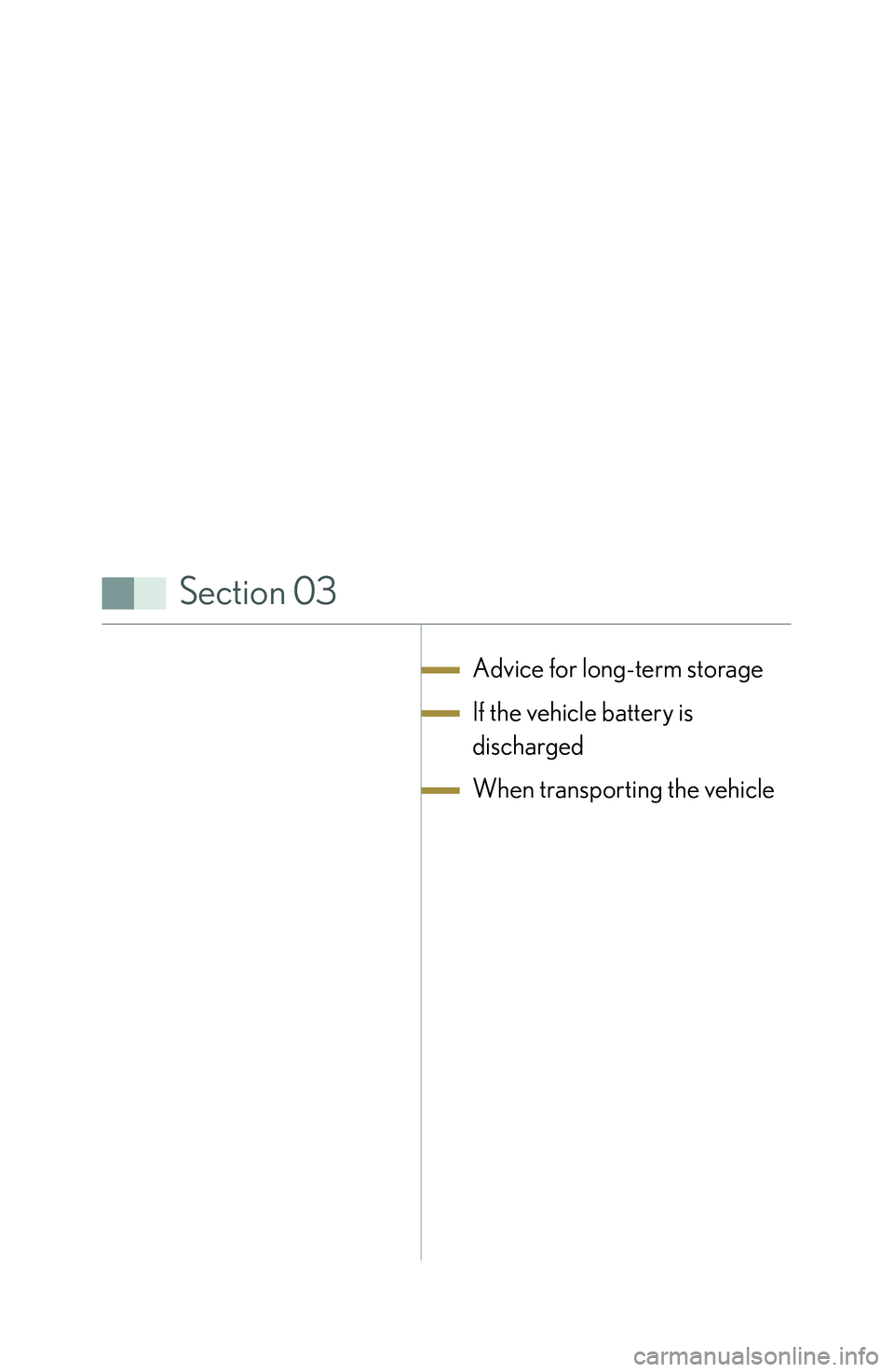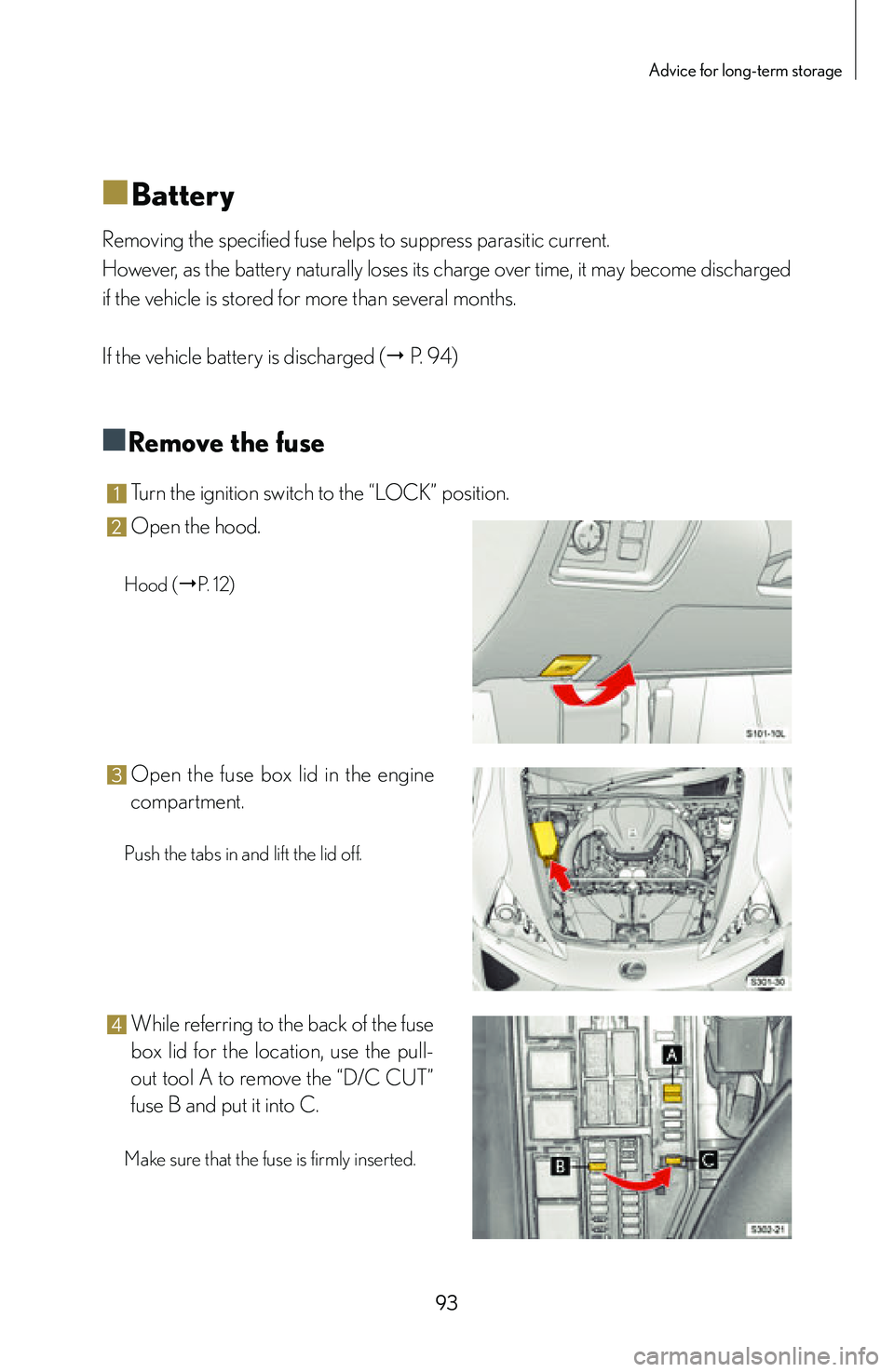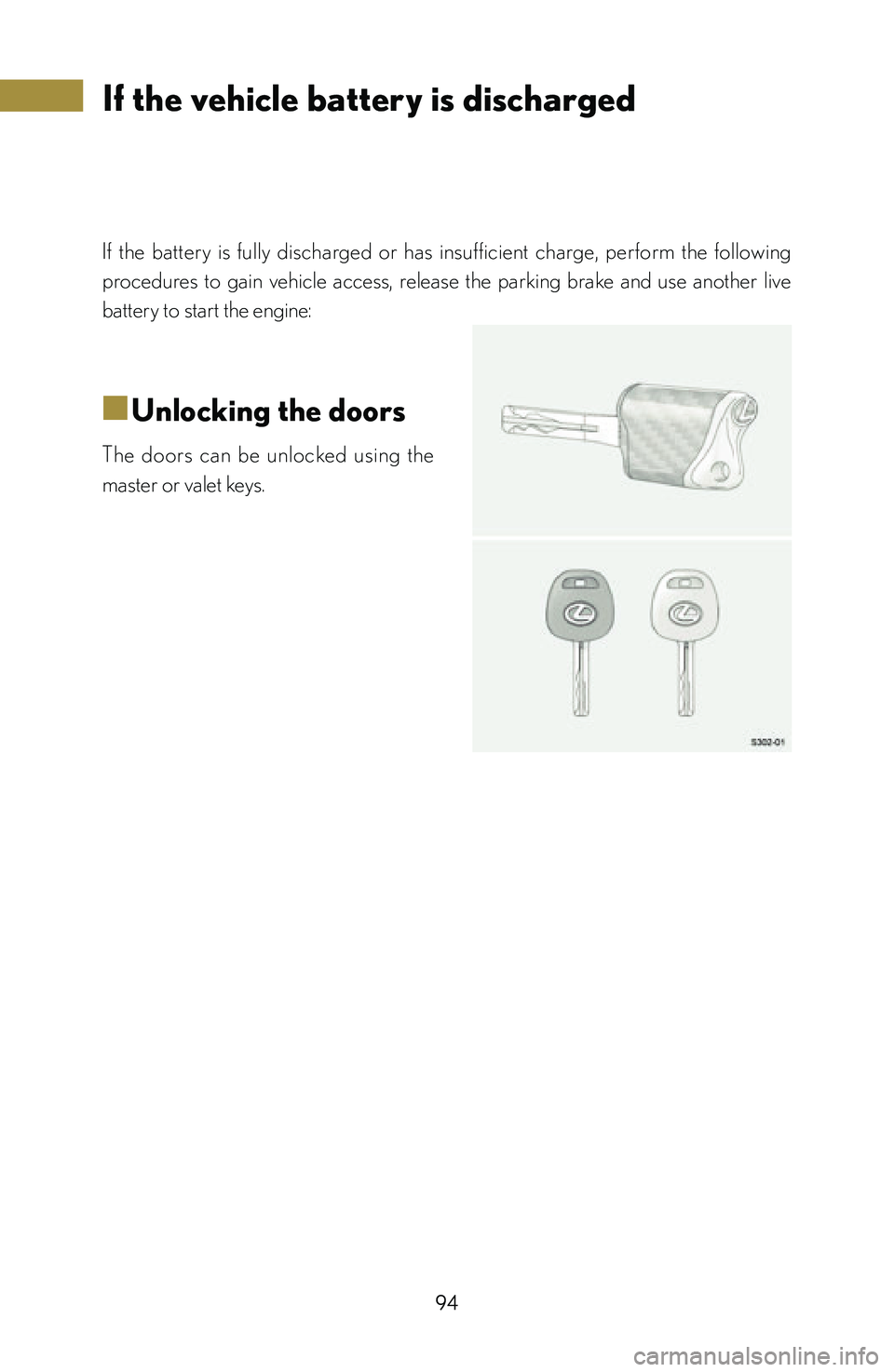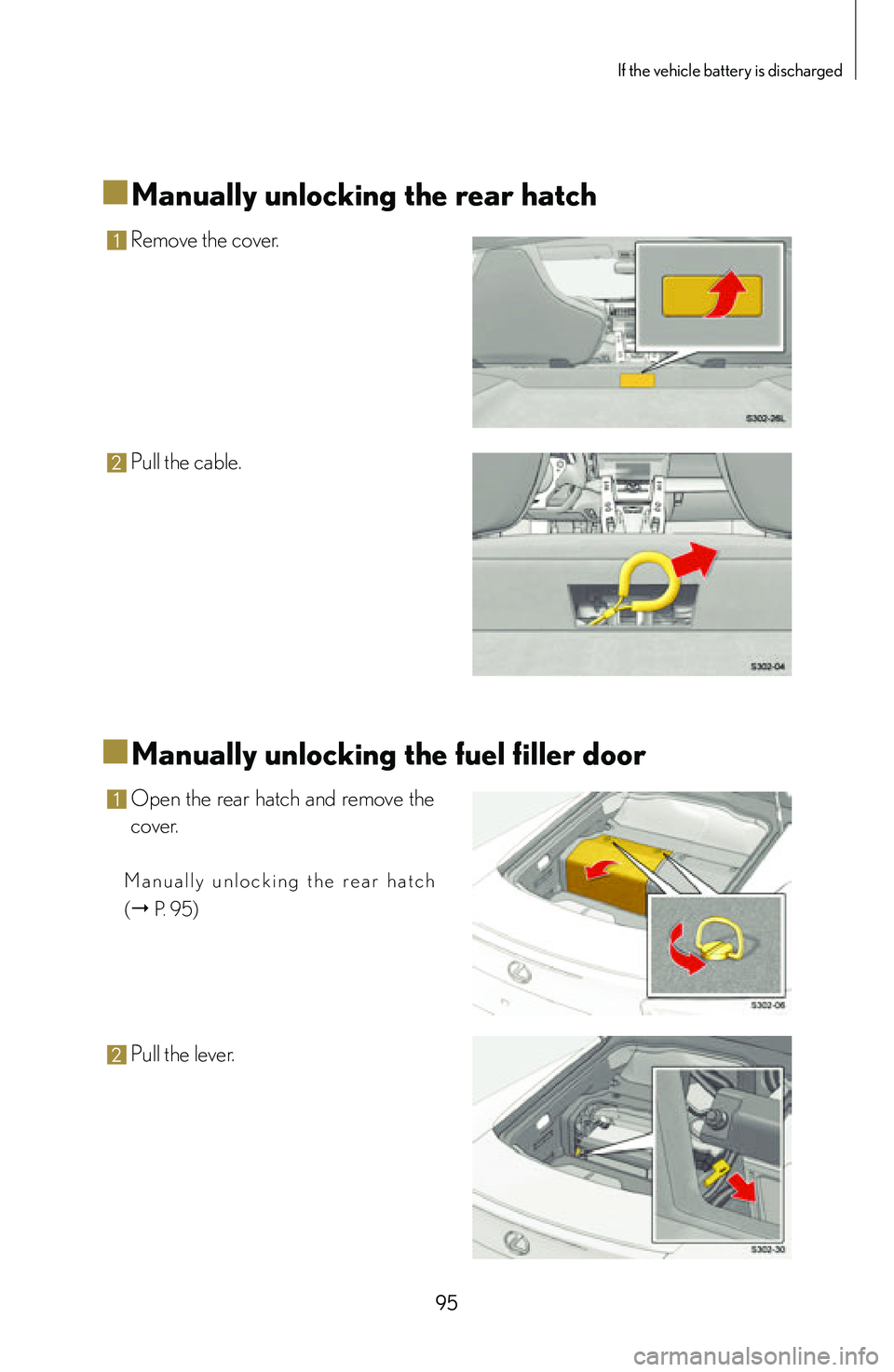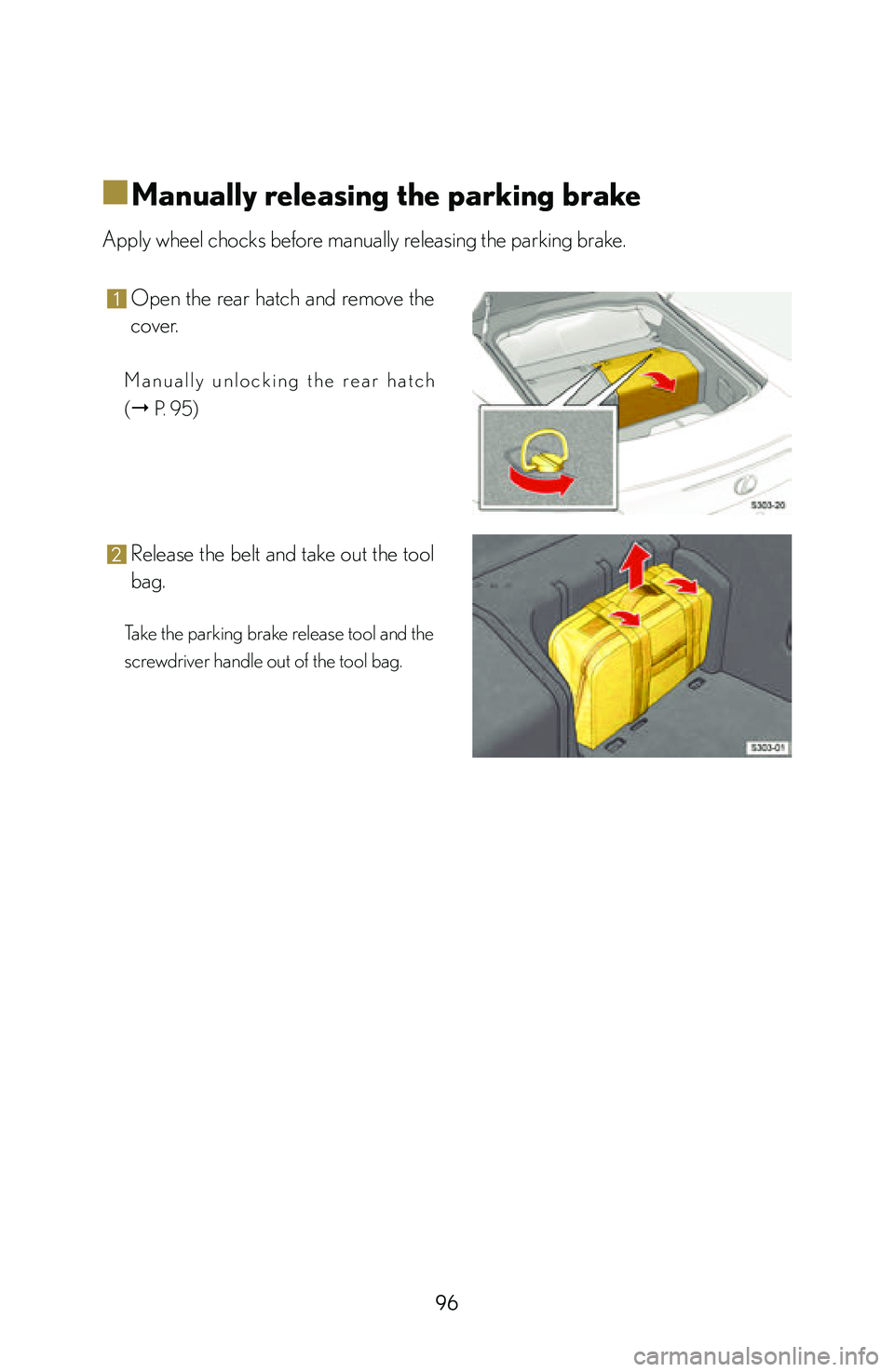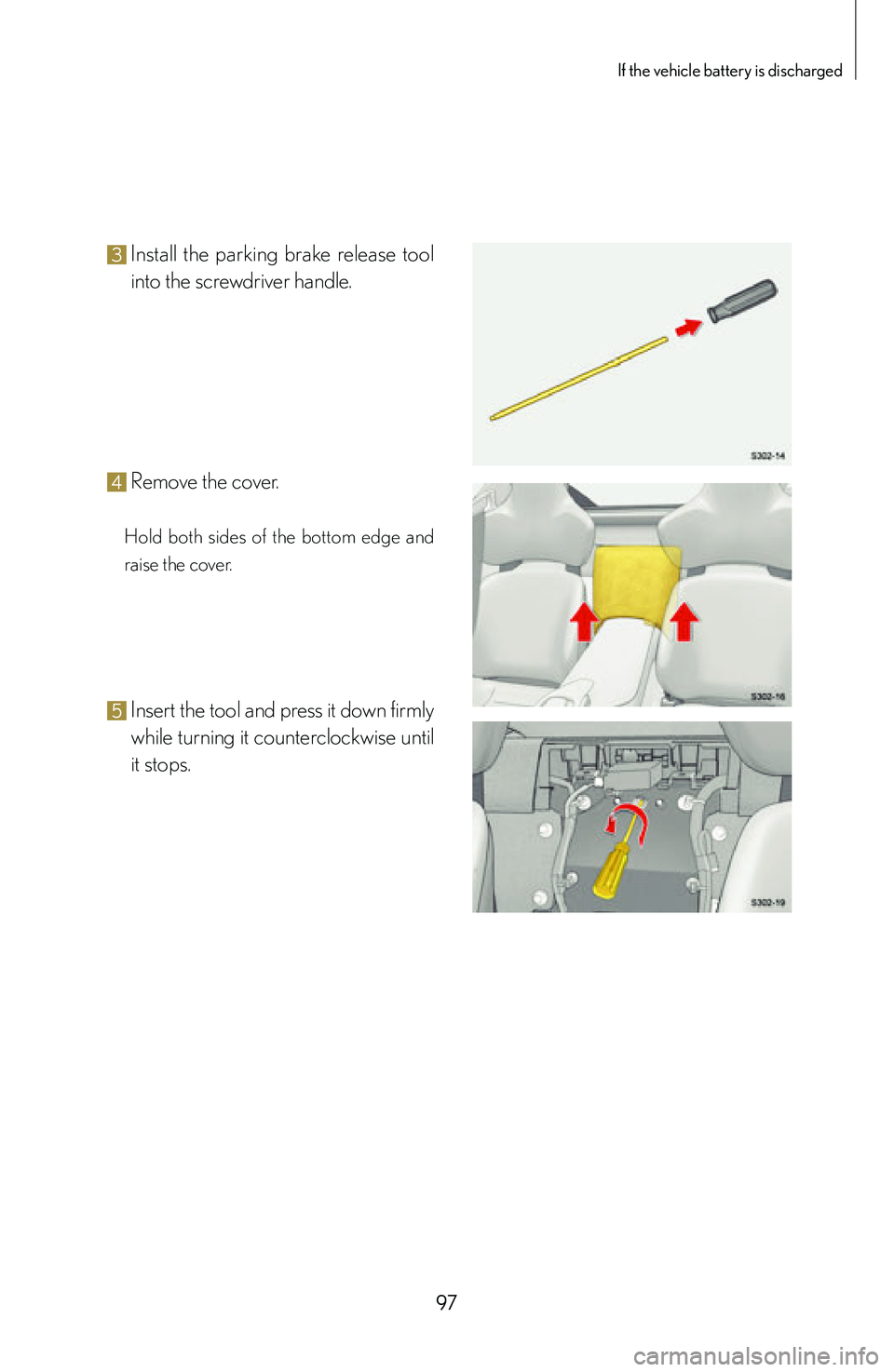lexus LFA 2012 Technical Information / LEXUS 2012 LFA: INSIDE THE LFA
Manufacturer: LEXUS, Model Year: 2012,
Model line: LFA,
Model: Lexus LFA 2012
Pages: 128, PDF Size: 5.91 MB
lexus LFA 2012 Technical Information / LEXUS 2012 LFA: INSIDE THE LFA
LFA 2012
Lexus
Lexus
https://www.carmanualsonline.info/img/36/30118/w960_30118-0.png
lexus LFA 2012 Technical Information / LEXUS 2012 LFA: INSIDE THE LFA
Trending: ad blue, sport mode, fuse, suspension, ECU, tow, gearbox
Page 91 of 128
Page 92 of 128
Page 93 of 128
Section 03
Advice for long-term storage
If the vehicle battery is
discharged
When transporting the vehicle
Page 94 of 128
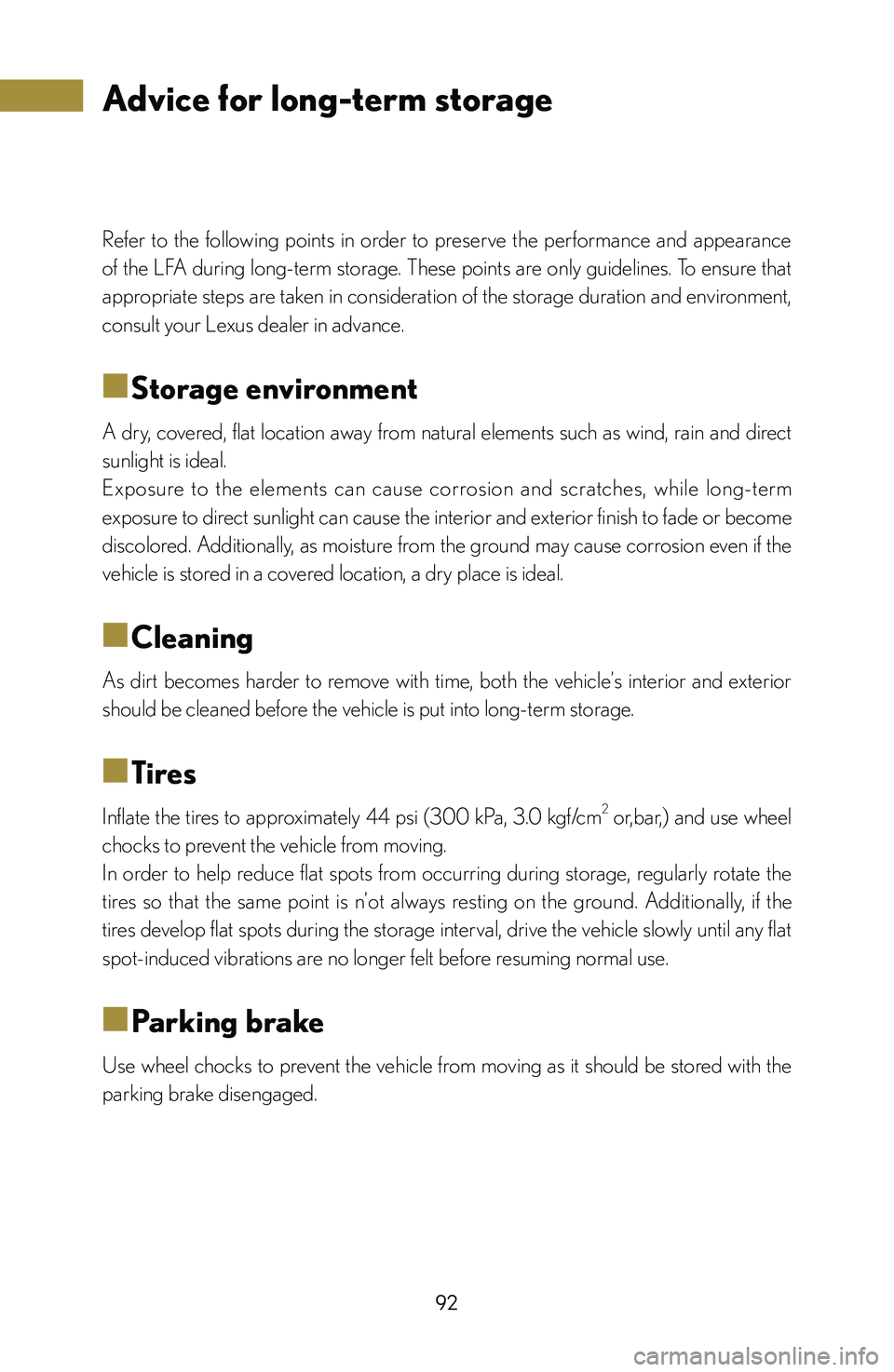
92
Refer to the following points in order to preserve the performance and appearance
of the LFA during long-term storage. These points are only guidelines. To ensure that
appropriate steps are taken in consideration of the storage duration and environment,
consult your Lexus dealer in advance.
■
■Storage environment
A dry, covered, flat location away from natural elements such as wind, rain and direct
sunlight is ideal.
Exposure to the elements can cause corrosion and scratches, while long-term
exposure to direct sunlight can cause the interior and exterior finish to fade or become
discolored. Additionally, as moisture from the ground may cause corrosion even if the
vehicle is stored in a covered location, a dry place is ideal.
■
■Cleaning
As dirt becomes harder to remove with time, both the vehicle’s interior and exterior
should be cleaned before the vehicle is put into long-term storage.
■
■Tires
Inflate the tires to approximately 44 psi (300 kPa, 3.0 kgf/cm2 or,bar,) and use wheel
chocks to prevent the vehicle from moving.
In order to help reduce flat spots from occurring during storage, regularly rotate the
tires so that the same point is n’ot always resting on the ground. Additionally, if the
tires develop flat spots during the storage interval, drive the vehicle slowly until any flat
spot-induced vibrations are no longer felt before resuming normal use.
■
■Parking brake
Use wheel chocks to prevent the vehicle from moving as it should be stored with the
parking brake disengaged.
Advice for long-term storage
Page 95 of 128
93
Advice for long-term storage
■
■Battery
Removing the specified fuse helps to suppress parasitic current.
However, as the battery naturally loses its charge over time, it may become discharged
if the vehicle is stored for more than several months.
If the vehicle battery is discharged ( "
P. 94)
■
■Remove the fuse
1 Turn the ignition switch to the “LOCK” position.
2 Open the hood.
Hood ("P. 12)
3 Open the fuse box lid in the engine
compartment.
Push the tabs in and lift the lid off.
4 While referring to the back of the fuse
box lid for the location, use the pull-
out tool A to remove the “D/C CUT”
fuse B and put it into C.
Make sure that the fuse is firmly inserted.
Page 96 of 128
94
If the battery is fully discharged or has insufficient charge, perform the following
procedures to gain vehicle access, release the parking brake and use another live
battery to start the engine:
■
■Unlocking the doors
The doors can be unlocked using the
master or valet keys.
If the vehicle battery is discharged
Page 97 of 128
95
If the vehicle battery is discharged
■
■Manually unlocking the rear hatch
1 Remove the cover.
2 Pull the cable.
■
■Manually unlocking the fuel filler door
1 Open the rear hatch and remove the
cover.
M a n u a l l y u n l o c k i n g t h e r e a r h a t c h
(
" P. 95)
2 Pull the lever.
Page 98 of 128
96
■
■Manually releasing the parking brake
Apply wheel chocks before manually releasing the parking brake.
1 Open the rear hatch and remove the
cover.
M a n u a l l y u n l o c k i n g t h e r e a r h a t c h
(
" P. 95)
2 Release the belt and take out the tool
bag.
Take the parking brake release tool and the
screwdriver handle out of the tool bag.
Page 99 of 128
97
If the vehicle battery is discharged
3 Install the parking brake release tool
into the screwdriver handle.
4 Remove the cover.
Hold both sides of the bottom edge and
raise the cover.
5 Insert the tool and press it down firmly
while turning it counterclockwise until
it stops.
Page 100 of 128
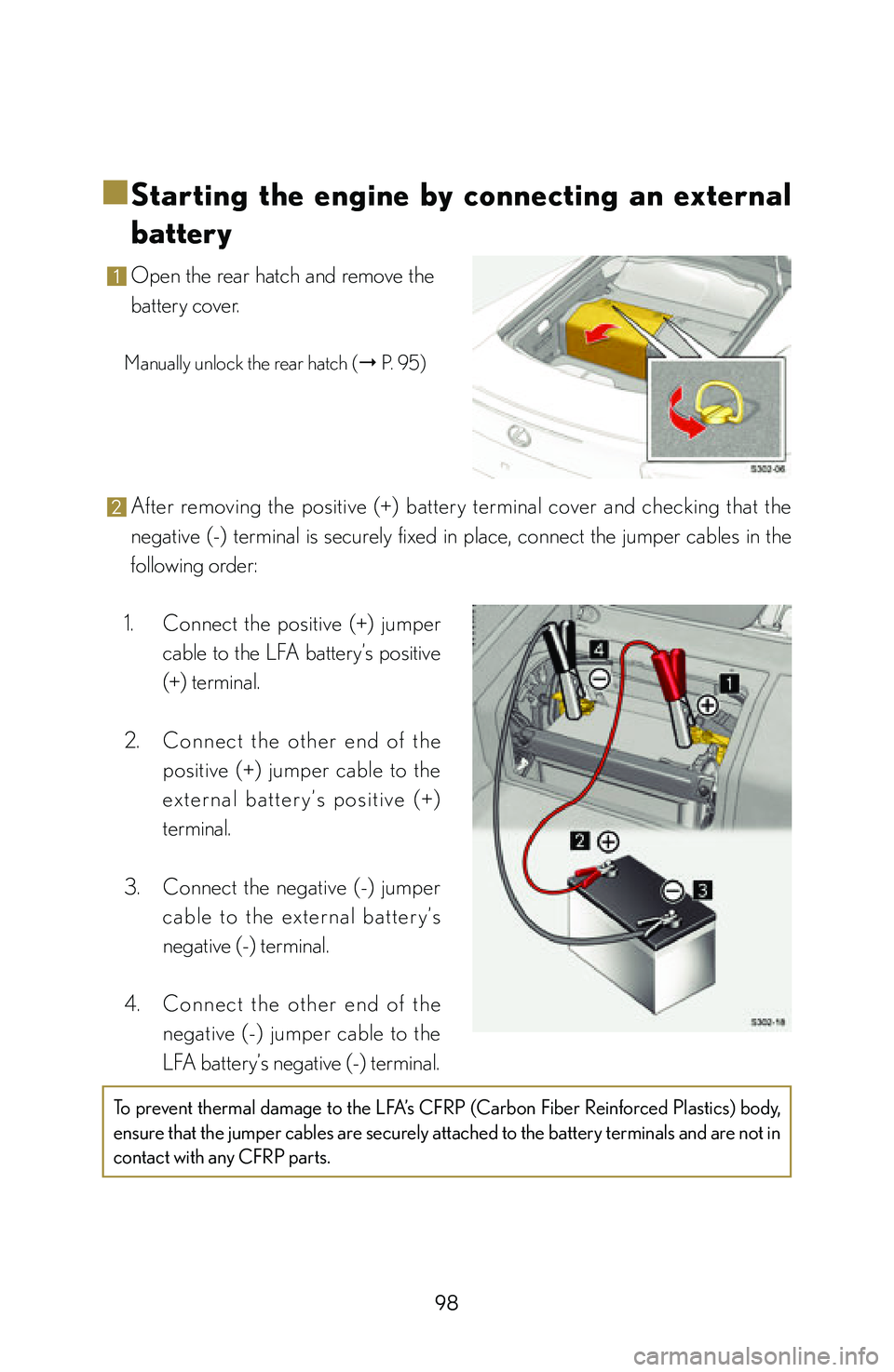
98
■
■Starting the engine by connecting an external
battery
1 Open the rear hatch and remove the
battery cover.
Manually unlock the rear hatch (" P. 95)
2 After removing the positive (+) battery terminal cover and checking that the
negative (-) terminal is securely fixed in place, connect the jumper cables in the
following order:
1. Connect the positive (+) jumper
cable to the LFA battery’s positive
(+) terminal.
2. C o n n e c t t h e o t h e r e n d o f t h e
positive (+) jumper cable to the
e x t e r n a l b a t t e r y ’s p o s i t i ve ( + )
terminal.
3. Connect the negative (-) jumper
c a b l e t o t h e ext e r n a l b a t t e r y ’s
negative (-) terminal.
4. C o n n e c t t h e o t h e r e n d o f t h e
negative (-) jumper cable to the
LFA battery’s negative (-) terminal.
To prevent thermal damage to the LFA’s CFRP (Carbon Fiber Reinforced Plastics) body,
ensure that the jumper cables are securely attached to the battery terminals and are not in
contact with any CFRP parts.
Trending: suspension, transmission oil, sport mode, oil capacity, brake pads replacement, load capacity, change wheel


